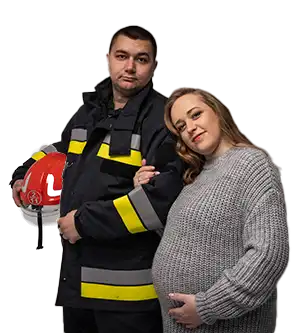
Millions of Heroic Firefighters May Have Been Exposed To Carcinogenic Levels Of PFAS Forever Chemicals
The universal firefighting community confronts the challenge of addressing potential health risks linked to past and current AFFF usage
Monday, November 13, 2023 - Within the intricate fabric of American society, firefighters emerge as unsung heroes, individuals who willingly put themselves in harm's way to safeguard lives and property from the ravages of fire. According to the National Fire Protection Association (NFPA), the year 2019 saw an estimated 1,115,000 firefighters in the United States, a diverse collective encompassing career professionals, volunteers, and those affiliated with federal, state, and local government agencies. Tens of thousands more US service members serve as military firefighters. At the core of this expansive number lies a majority of volunteers, embodying the ethos of community service by promptly responding to calls for assistance. These volunteers play a pivotal role, often serving as the backbone of firefighting efforts in smaller communities and rural areas where resources may be limited. Their unwavering commitment reflects the spirit of civic duty that has defined American firefighting for generations. Firefighters were credited as saving hundreds of lives on 9/11 as they were the first responders to rush in after the planes hit the Twin Towers. Many of them gave their lives. Firefighters with cancer should consult an AFFF cancer attorney to see if they qualify to file a claim.
Career firefighters undergo rigorous training, often involving using firefighting foam to suppress petroleum and jet-fuel fires. They commit their professional lives to the noble cause of firefighting. Typically employed by municipal fire departments, they provide a constant and expert presence in urban areas, equipped with specialized skills to manage diverse emergencies, from structural fires to hazardous materials incidents, thereby illustrating the dynamic nature of contemporary firefighting. The military, and government agencies, both at the state and federal levels, contribute significantly to the firefighting force, often deploying specialized teams and resources to tackle large-scale emergencies and complex incidents. The collaborative efforts of these diverse firefighting entities forge a comprehensive and robust system dedicated to safeguarding communities across the nation. While these statistics paint a picture of the sheer magnitude of the firefighting community, recent concerns have surfaced regarding potential health risks faced by firefighters, particularly those who may have unwittingly encountered harmful substances in the line of duty. A significant worry revolves around the utilization of firefighting foam, specifically formulations containing per- and polyfluoroalkyl substances (PFAS).
Firefighters with cancer may file AFFF lawsuits against the makers of the toxic chemical. PFAS, recognized for their water- and grease-resistant properties, are integral components of firefighting foam. However, emerging evidence suggests a potential connection between PFAS exposure and adverse health effects, including specific cancers, reproductive complications, and immune system disorders. As these concerns gain prominence, the firefighting community confronts the challenge of addressing potential health risks linked to past and current foam usage. Firefighting foam, a staple in the industry for decades and widely employed in training exercises and emergency responses, may have inadvertently introduced an unforeseen threat to the health of those it sought to protect. As awareness mounts concerning the potential dangers of PFAS exposure, firefighters and their advocates are advocating for heightened scrutiny, research, and regulation surrounding the use of firefighting foam. There is a collective push for identifying alternative foam formulations that retain effectiveness while mitigating potential health risks. Simultaneously, there is an urgent call for the establishment of comprehensive health monitoring and support systems for firefighters to ensure their well-being.">
 OnderLaw, LLC and The Overholt Law Firm, PC -
OnderLaw, LLC and The Overholt Law Firm, PC -